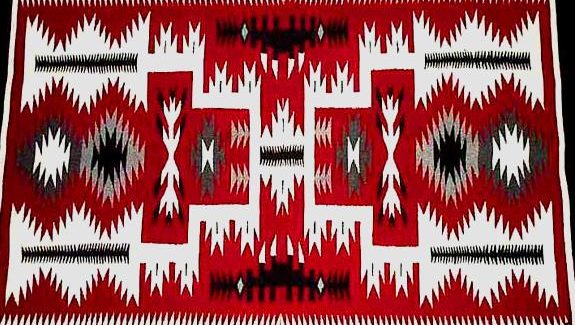Ethnologists believe that the Navajo were influenced by the early Pueblo blanket weavers, because of the obvious similarities between the Pueblo and the Navajo methods and designs of their weaving products. For both peoples woven objects were, first of all, supremely functional; blankets might be used for wearing, sitting upon, or hanging across the entries of dwellings. For both the Navajo and Zuni peoples weaving itself was a quiet act of faith-a link to the past.
The Pueblos having given them the technique, the Navajos quickly established their own style. In the Pueblo tradition it had generally been men who had done the weaving; among the Navajos the task was usually taken up by women.
A Pueblo man would weave up from the bottom, invert the piece, and continue; a Navajo woman would weave straight across, joining vertical sections along a characteristic diagonal called the lazy line.
Navajo weavers also added the “spirit trail” or “weaver’s pathway”-a line running off the edge of the piece that allowed the spirit of the weaver to escape so that she could go on to another.
A Fast Sell
A study done in 1973 by the Navajo Studies Department of the Dine College Community in Many Farms, Arizona, undertook to determine the time involved in creating a Navajo rug or blanket, from sheep shearing to marketing. The total was 345 hours. Out of these 345 hours, it took 45 hours to shear the sheep and process the wool; 24 hours to spin the wool, 60 hours to prepare the dye and dye the wool, 215 hours to weave the item, and one hour to sell it to tourists.


